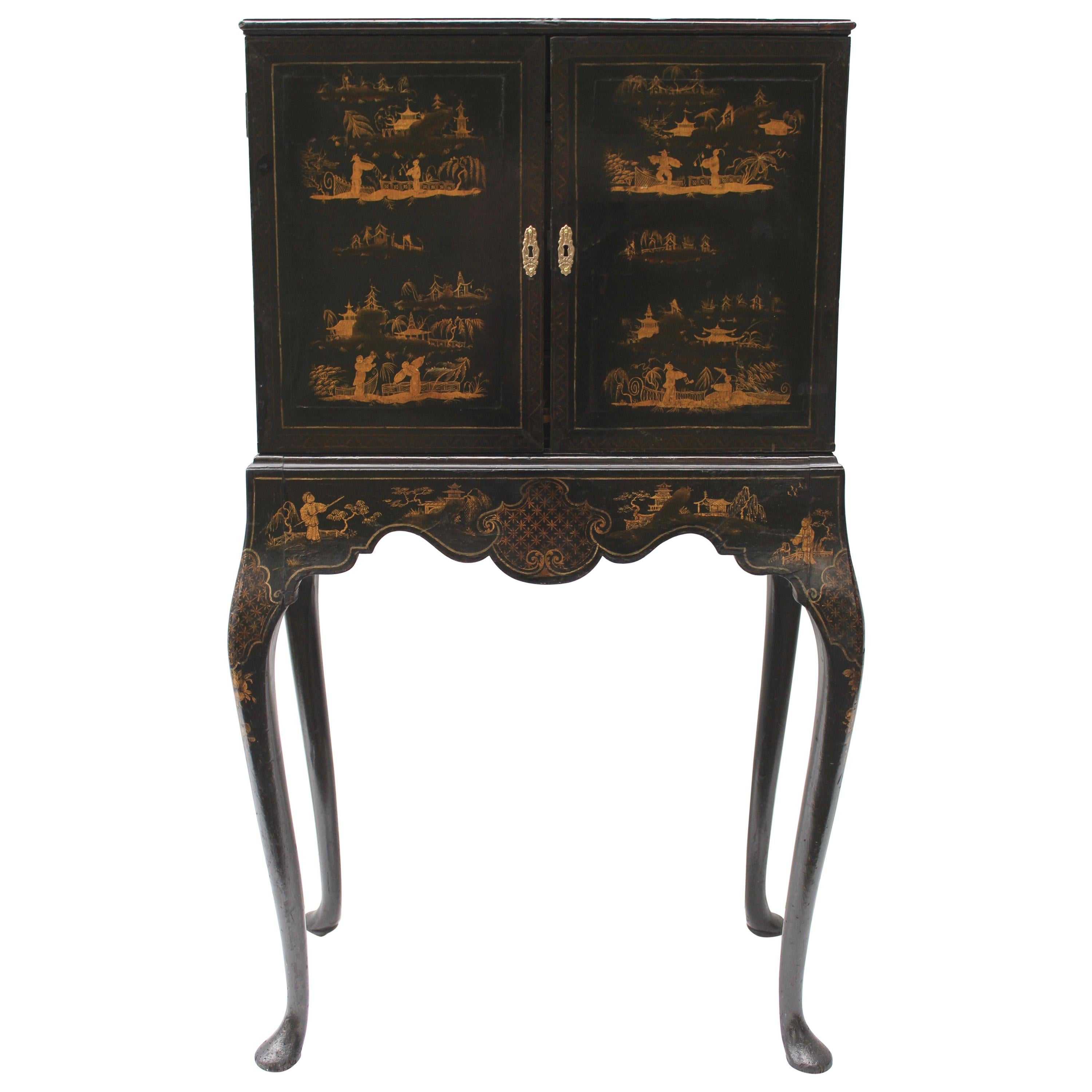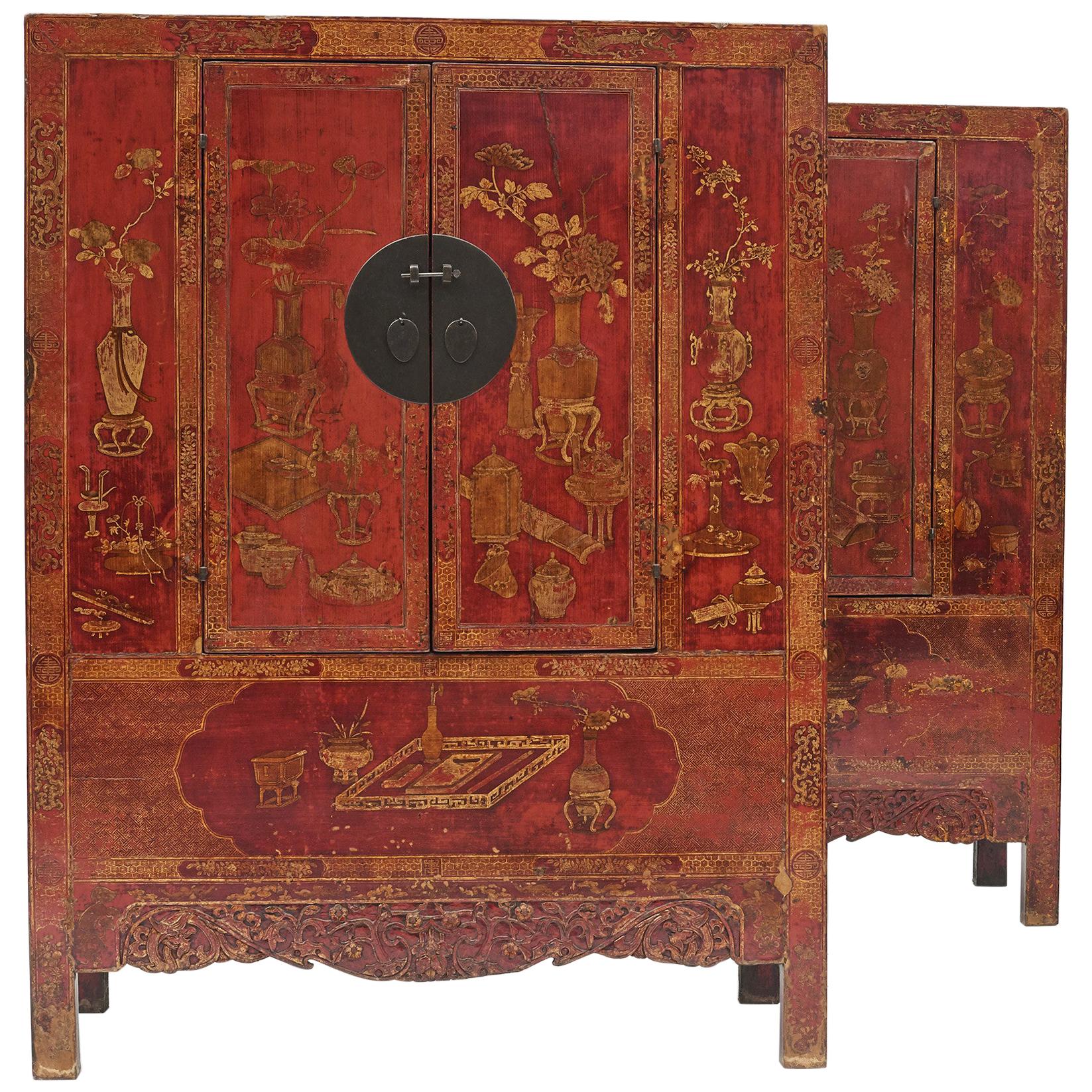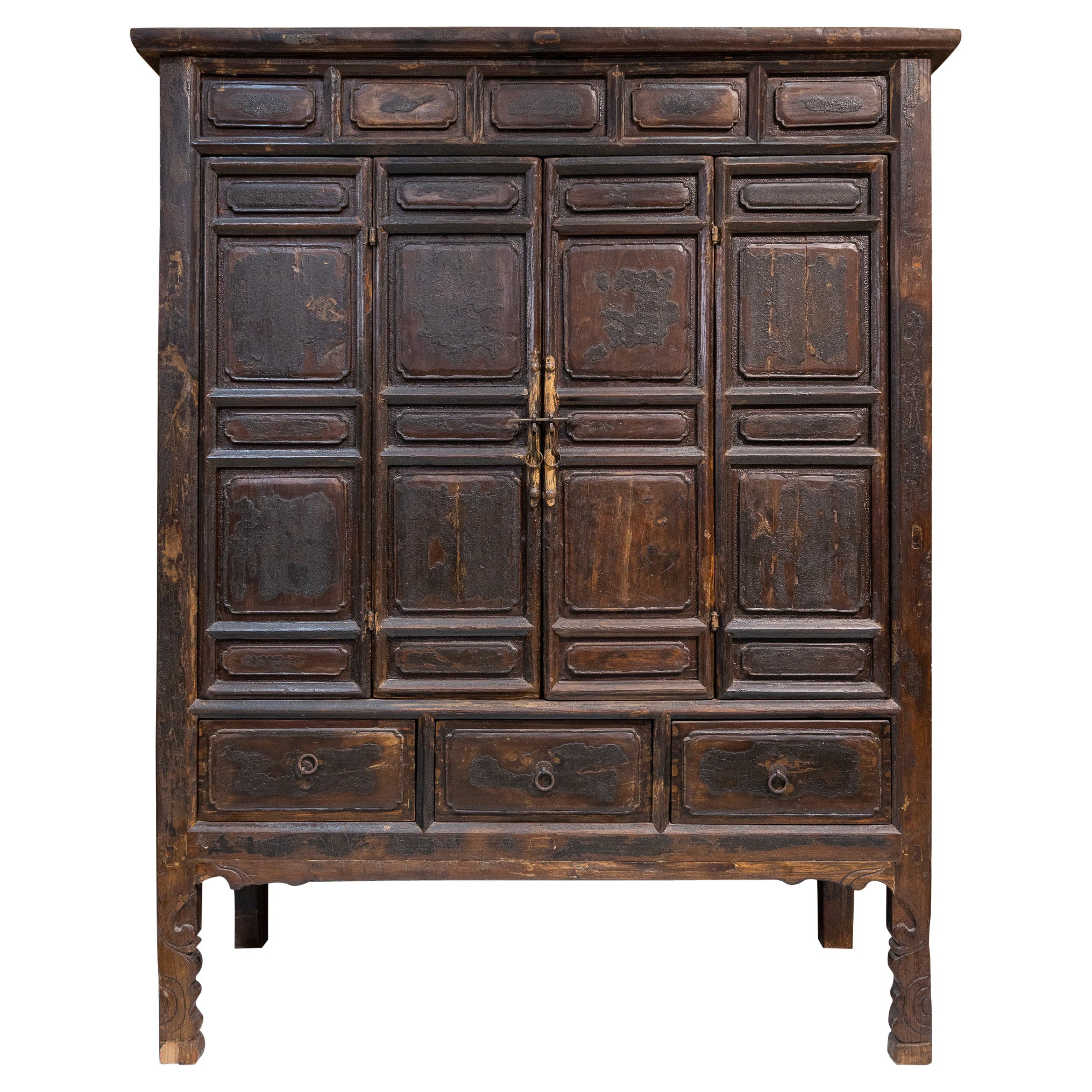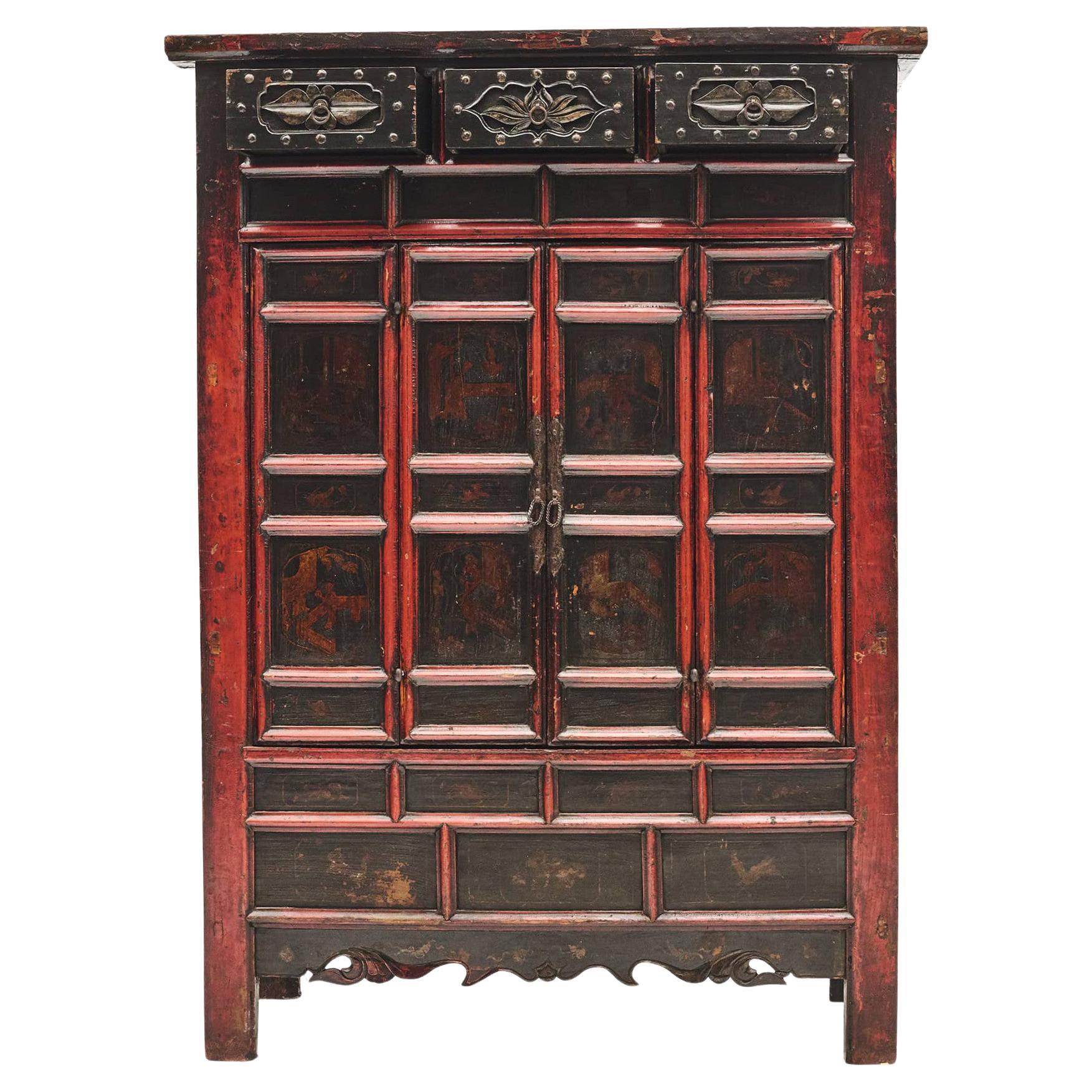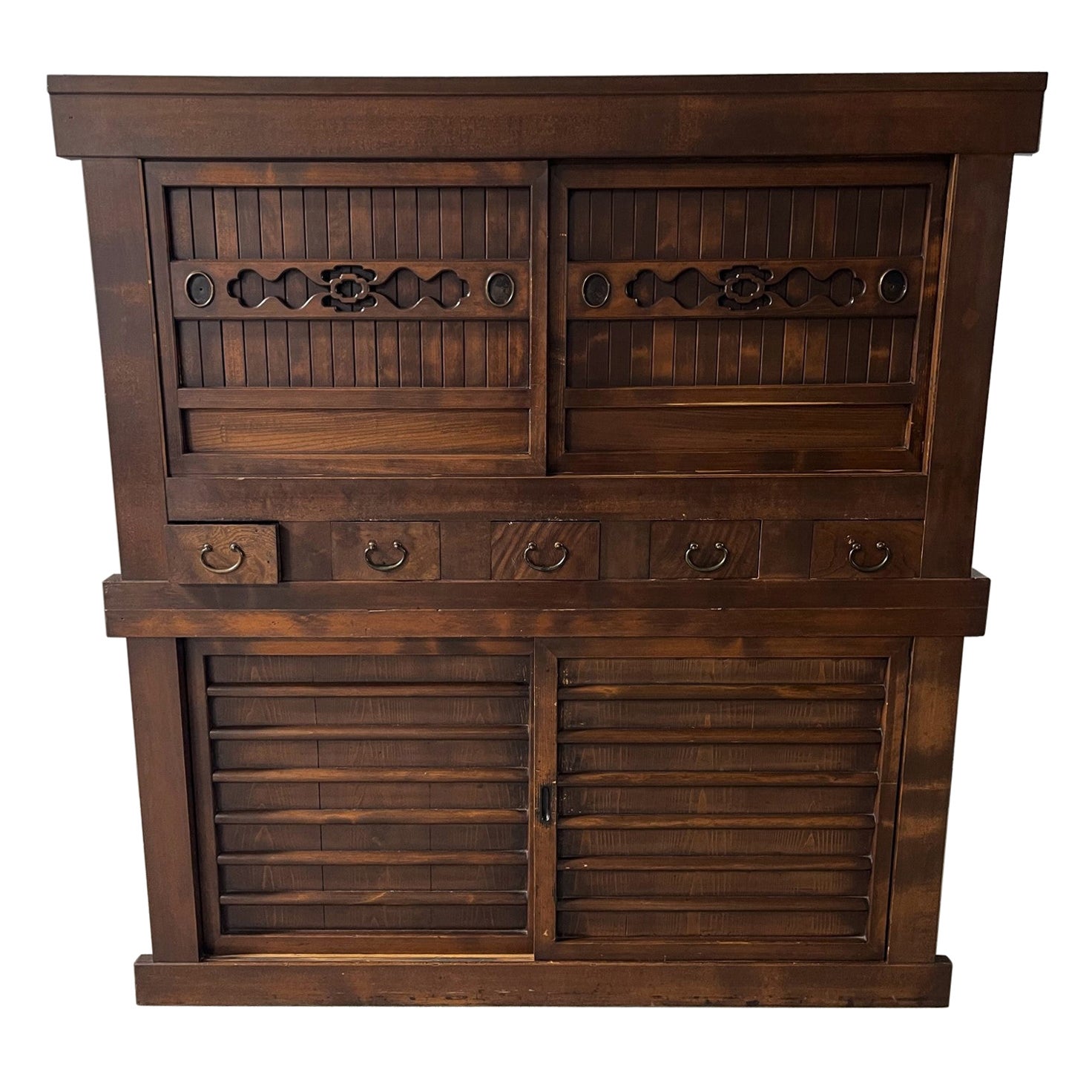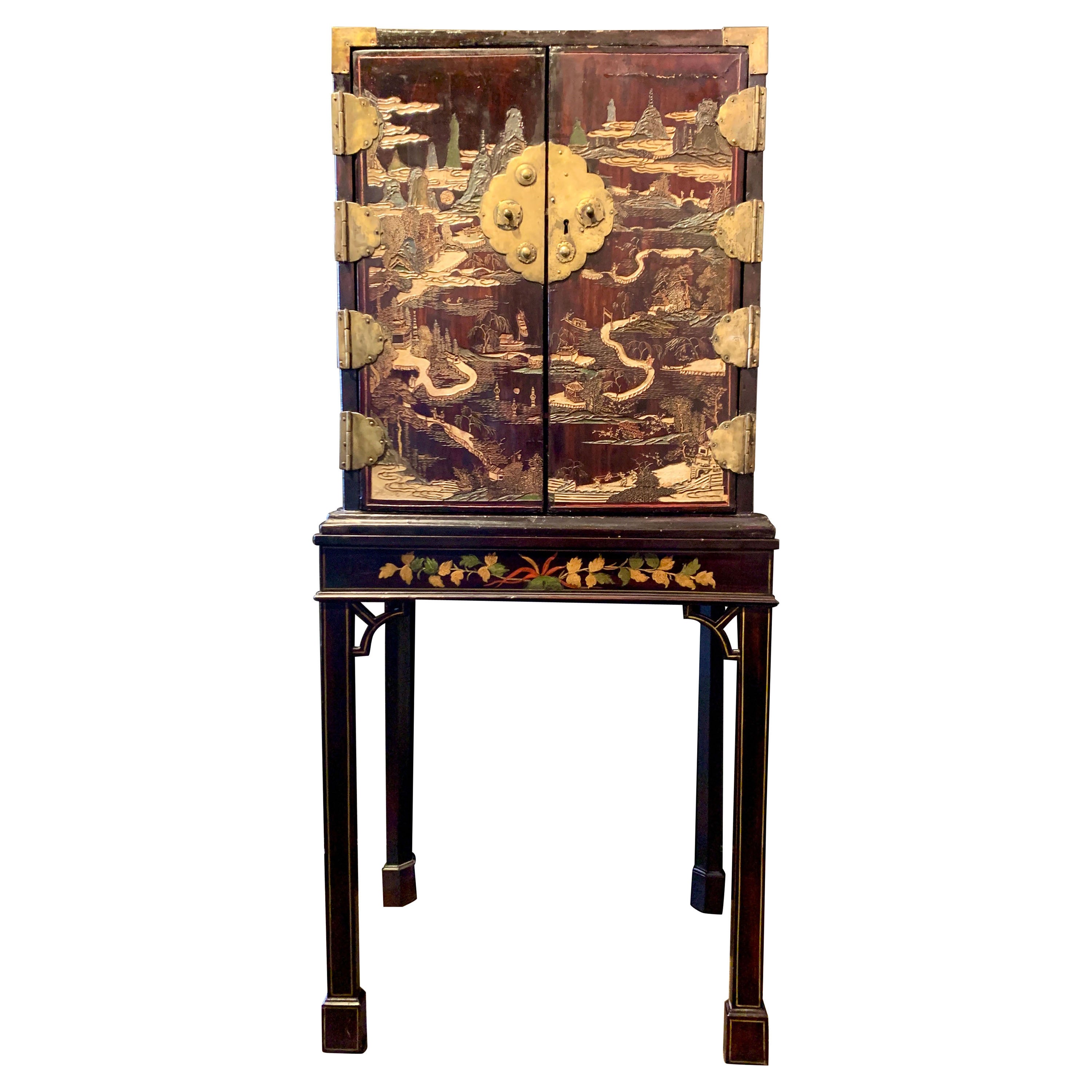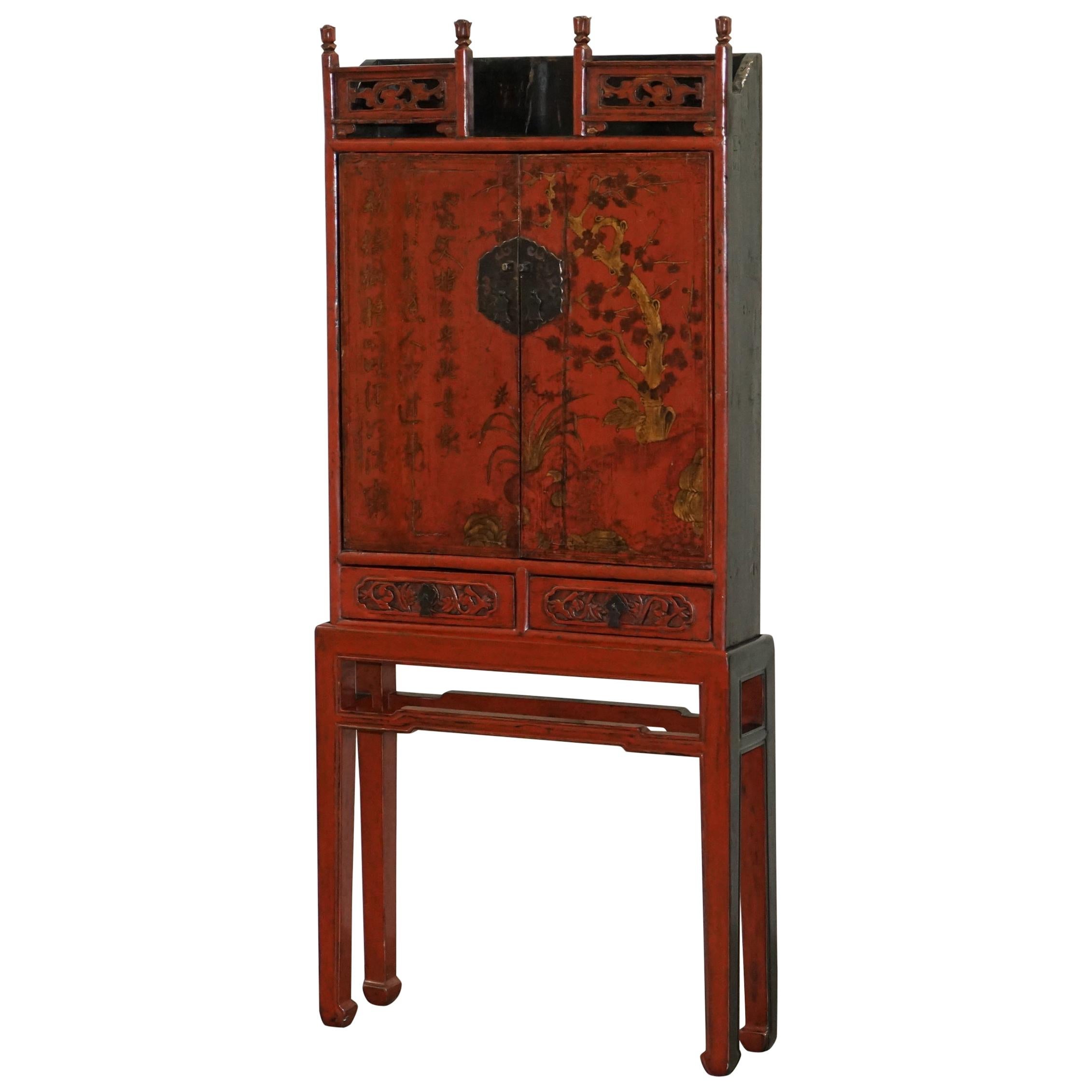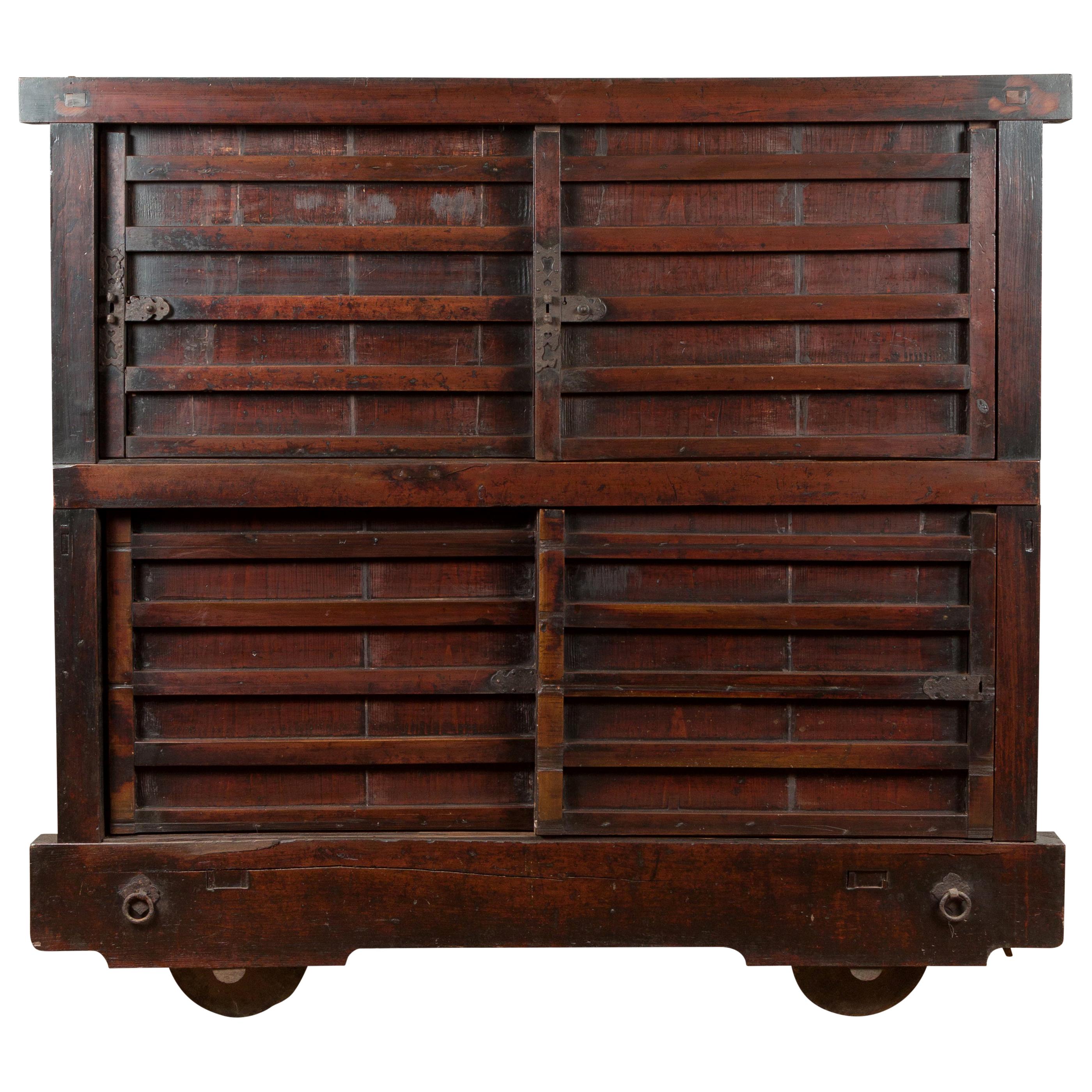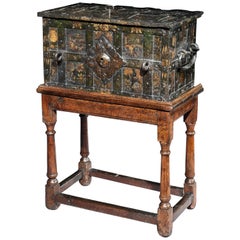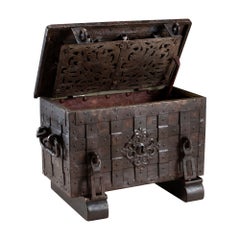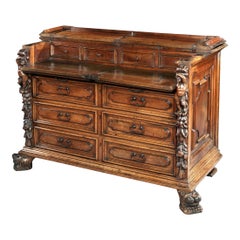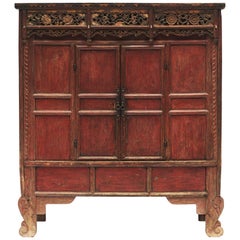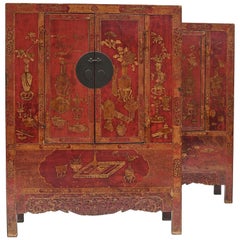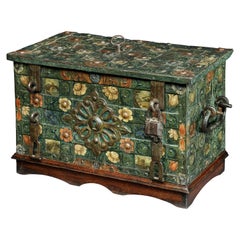
Strongbox, Safe, Late 16th Century, Nuremberg, Iron, Naïve, Painted, Oak Stand
View Similar Items
Want more images or videos?
Request additional images or videos from the seller
1 of 18
Strongbox, Safe, Late 16th Century, Nuremberg, Iron, Naïve, Painted, Oak Stand
About the Item
- Dimensions:Height: 19.3 in (49 cm)Width: 31.7 in (80.5 cm)Depth: 18.31 in (46.5 cm)
- Style:Elizabethan (Of the Period)
- Materials and Techniques:
- Place of Origin:
- Period:
- Date of Manufacture:circa 1580
- Condition:Wear consistent with age and use.
- Seller Location:BUNGAY, GB
- Reference Number:1stDibs: LU3867317098761
About the Seller
5.0
Vetted Seller
These experienced sellers undergo a comprehensive evaluation by our team of in-house experts.
Established in 1985
1stDibs seller since 2018
84 sales on 1stDibs
Typical response time: 9 hours
More From This SellerView All
- Strongbox Safe Iron Painted Armada Chest Nuremberg RenaissanceLocated in BUNGAY, SUFFOLKRare, small, late-Renaissance, Nuremberg, iron, 'armada box', strongbox or travelling safe with its original, naïve, painted decoration This is a rare, s...Category
Antique 16th Century German Renaissance Arms, Armor and Weapons
MaterialsIron
- Strongbox Safe Chest Iron Painted Armada 12 bolt lock Nuremberg RenaissanceLocated in BUNGAY, SUFFOLKRare, small, late-Renaissance, Nuremberg, iron, 'armada box', strongbox or travelling safe with its original, naïve, painted decoration on later sledge feet...Category
Antique Early 1600s German Renaissance Painted Furniture
MaterialsIron
- Cassettone or Bureau-Chest, Late 16th Century, Italian Renaissance, WalnutLocated in BUNGAY, SUFFOLKExceptional museum quality, Italian, renaissance walnut cassettone with fitted bureau in the upper part & exceptional Bambocci carving, Lombardy. This magnificent cassettone exudes the character and quality of the finest, late-Renaissance furniture. Late 16th century, Northern Italian furniture often had the sides, legs or angles, 'a Bambocci', incorporating carved figures which were unique sculptures in their own right. The putti on this cassettone are beautifully carved and of sculptural quality. Each angel has one arm raised to heaven, a poignant touch. Showing customary signs of wear from time, the lion’s paw feet make a great statement. This cassettone was conceived to have visual impact through the quality of the carving, as well as being very practical with the writing compartment fitted in the top part. It has survived in very original condition with a few small repairs and losses, and the color and patina are warm and lustrous. This cassettone was illustrated in one of the seminal works on Lombardy furniture in the 1969 and has been in two renowned collections. The hinged top in two sections faced with a solid moulded edge. The front part has a fall front and opens to reveal a writing compartment. The fall front retains its original lock and is concealed with a false drawer which is above three drawers. All with moulded panels, escutcheons and retaining the original iron handles. The front ends have exceptional, bambocci, carved putti raising their arms to heaven above trailing foliage. Standing on magnificent lion...Category
Antique 16th Century Italian Baroque Furniture
MaterialsWalnut
- Table, Drawleaf, 18-Seat, 16th Century, Italian, Renaissance, Walnut, IronLocated in BUNGAY, SUFFOLKThis massive 18-seat table has many features which are typical of drawleaf tables that were made in the last quarter of the 16th century. Early continental drawleaf tables rarely com...Category
Antique 16th Century Italian Renaissance Dining Room Tables
MaterialsWalnut
- Cathedra or Throne Chair, Late 16th Century, French Second Renaissance, WalnutLocated in BUNGAY, SUFFOLKA moulded cornice sits above the high, panelled back with fluting and applied roundels. The later, metal pin on the left edge releases the central, moulded panel in the back which retains its original hinges. When the pin is removed the panel can be lowered, revealing a large area behind. The scroll arms are supported by tapering turnings which can be compared with mid-16th century benches of the nave such as those in the churches in Gerberoy and Coivrel which are in Oise, the Piccardie region of Frances. The panelled, box seat has later 18th century hinges...Category
Antique 16th Century French Renaissance Armchairs
MaterialsWalnut
- Cassone Venetian 16thc Renaissance Cedar Original Stand Neptune Armorial UnicornLocated in BUNGAY, SUFFOLKA large, museum-quality, late-16th century, cedar, Venetian, cassone on its original stand ; the sea creature ornament probably drawn from De la Cosmographie Universelle, livre III, engraving 1550-1568 • This is the only, known, cassone of this type retaining its original stand. • The collection in Italy that it originally came from was a palazzo that it had reputedly been in for generations of the same family and this most likely why the stand has survived. • The decoration is very unusual, and delightful in the array of sea creatures depicted. The connection of the region with the sea is very strong. • The inner lid is very practical and can be used for display or serving. The interior offers masses of storage space which is particularly suitable for textiles being cedar which repels moths. • The cassone is a beautiful, rich colour and has developed a lustrous patina. • The cassone is Illustrated & discussed in discussed in ‘Woods in British Furniture Making’, (Bowett) c13 Provenance: Private collection, Mayorca. Private collection, Italy Related to: Cassone in V&A collection, no 4886-1858 Width 177 cm., 70 in., Height 87 cm., 34 ½ in. Depth 68 cm. 26 ½ in. With lid open 155 cm., 61 in “Late 16th and 17th century, London inventories confirm that cypress wood chests were relatively common in prosperous households. In 1598 there was a cypress chest in the hall of John Mason, a vintner, valued at 50 shillings. It was the most expensive piece of furniture in the house. Similarly there was a ‘fair cypress chest’ in the great chamber of Adrian Moore, haberdasher, in 1618, and a cypress chest worth £ 9 in the hall of Thomas Willis, a clotherworker in 1630. The chests were sometimes described as ‘great’ or ‘small’ but not otherwise described – presumably they were familiar to the compilers of the inventories. They were placed in halls, chambers and parlours, places where they would have been on prominent view. It is noteworthy that only the chests were imported and not, apparently, the wood. “ (p282, Cypress, Woods in British Furniture making) The decoration is very unusual, and delightful in the array of sea creatures depicted. The connection of the region with the sea is very strong. I have never seen one of these chests on its original stand. The collection in Italy that it came from was a palazzo that it had reputedly been in for generations of the same family and this most likely why the stand has survived. In practical terms, the stand makes the chest a comfortable height to use. The exterior of the chest is a beautiful, mellow colour and has developed a lustrous patina. The top comprises three planks faced with a shallow, cleated, moulded edge nailed on. The front retains its original hasp and lockplate and, as is commonly found, the lock has been removed but, unusually the original ring hinges have survived. The top opens to reveal an inner lid with ring hinges and a brass ring, revealing a large open storage compartment below, the bottom lined with an old fabric. The underside of the lid retains its original penwork and pierced decoration. The central panel depicts sea creatures, sharks, flatfish, monster fish, sea horses, Neptune and mermaids, probably drawn from De la Cosmographie Universelle, livre III, engraving 1550-1568. The panels either side depicting a crown, the sun and unicorns amongst stylised floral sprays. The surrounding naive penwork border features repeats of three naked ladies in the sea, a man wearing an animal mask with two dogs in a forest and a huntsman with two dogs. The floor of the inside of the cassone is upholstered in an 18th century red and yellow striped woven textile the colours of the Catalan flag. The front is decorated with pierced, silhouettes of beasts, trees and figures. The sides are plain with iron carrying handles. On its original stand, with similar decoration, and bearing a cartouche which would have been decorated with the arms of its original owner. Italian, last quarter of the 16th century. Condition Report : Old repair to bottom left moulding of top. Some hairline cracks to top. The hasp, lockplate and ring hinges are original, the lock has been removed. Handles probably 18th century. The inner lid was probably added in the 18th century and supporting mechanism in the 19th century. Exceptional original, lustrous colour and patina. Measures: Width 177 cm. 70 in., height 87 cm. 34 ½ in., depth 68 cm. 26 ½ in. The cassone was the principal piece of furniture in 16th century, Italy. These chests were made as bridal gifts for nobles and aristocrats from cedar specifically for storing their much prized and valued hangings, clothing and linens, as the wood repels moths and the sweet fragrance delicately scents fabrics. Consquently the cassone, as in this example might be decorated with the family coat of arms or with depictions of virtue and edifying episodes from the Bible. A young woman could not be allowed to enter marriage without some instruction. Later, many cassoni were taken apart so that the decorated front panel could be hung as a painting. The stand of this cassone has a cartouche that would have contained a painted coat of arms in the centre which shows that it was conceived for a noble family. Such cypress or cedar chests, incised in bas relief and pyrographically engraved, have long been associated with Venice and typically have a naïve decoration on the exterior. Literature: The 'cypress chests' containing 'arras, counterpoints, costely apparel, tents, and canopies, fine linen, Turkey cushions...Category
Antique 16th Century Italian Renaissance Cabinets
MaterialsCedar
You May Also Like
- 15th-16th Century Ming Dynasty Cabinet. Red LacquerLocated in Kastrup, DKRare and well-preserved 16th century cupboard / cabinet. Detailed carved top section depicting a floral leaf design and people in polychrome lacquer. Front with red lacquer, pair of ...Category
Antique 16th Century Chinese Ming Cabinets
MaterialsElm
- 19th Century Chinoiserie Cabinet on StandLocated in East Hampton, NY19th century chinoiserie collector's cabinet on gilt and ebonized decorated apron over Queen Anne's style cabriole legs.Category
Antique 19th Century Furniture
- Pair of Late 18th Century Chinese CabinetsLocated in Kastrup, DKA rare set of cabinets. Red lacquer with original carvings and well-preserved leaf gold decorations. Black lacquer on the sides of the cabinet. A decorative and beautiful pair of cab...Category
Antique Late 18th Century Chinese Qing Cabinets
MaterialsBrass
$16,424 / set - Late 19th Century Large Cabinet from Shanxi, ChinaLocated in Singapore, SGOriginally a black lacquer cabinet, but much of the lacquer have peeled off, revealing the lovely wood underneath. Only the middle doors open, the panels on the left and right are se...Category
Antique Late 19th Century Chinese Qing Furniture
MaterialsIron
- Late 18th Century Decorated Cabinet from Shanxi, ChinaLocated in Kastrup, DKLate 18th century cabinet from Shanxi, China. Original red and black lacquer with a light clear surface finish, which highlights the lovely natural patina. Pair of bi-fold doors wi...Category
Antique Late 18th Century Chinese Qing Cabinets
MaterialsIron
- Large Two Section Japanese Kitchen Tansu, Late 19th CenturyLocated in Savannah, GALarge two section Japanese Kitchen Tansu, late 19th century. Interior has been modified for bar use (glass shelves). Part of the back bottom sec...Category
Antique Late 19th Century Japanese Cabinets
MaterialsElm
Recently Viewed
View AllMore Ways To Browse
Southern Antique Iron
Asian Box On Stand
Victorian Safes
Early Eighteen Century
Antique Spanish Bed
Antique Spanish Beds
Iron Strap Work
Asian Chest On Stand
Hasp Lock
Manor Oak
Green Bed Throw
Painted Wash Stand
Asian Antique Jewelry Boxes
Antique Asian Jewelry Box
Antique Asian Jewelry Boxes
Antique Money Chest
17th Century Safe
Naive Ship

